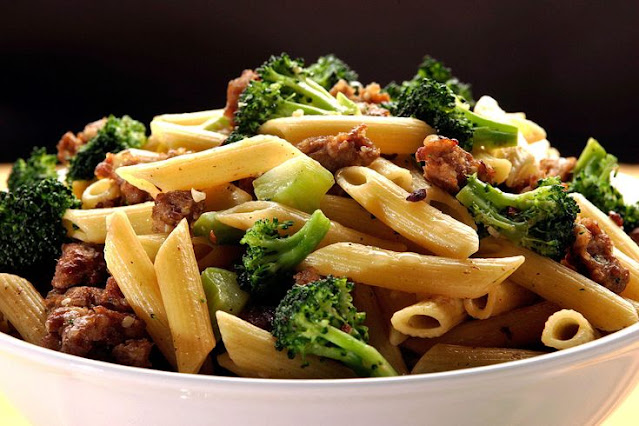Pasta: A Global Culinary Phenomenon
 |
| Pasta |
Pasta, a staple in countless cuisines worldwide, has captivated taste buds for centuries. Its versatility, affordability, and deliciousness have made it a beloved dish. From classic Italian recipes like spaghetti alla carbonara and lasagna to innovative fusions with diverse flavors, pasta offers endless possibilities for culinary exploration.
A Brief History of Pasta
While often associated with Italian cuisine, pasta has roots that stretch far beyond the Mediterranean. Evidence suggests that pasta-like dishes were enjoyed by ancient civilizations in China and Mesopotamia. However, it was in Italy that pasta truly flourished, evolving into a culinary art form with countless regional variations.
The Art of Pasta Making
The process of making Pasta is both simple and satisfying. Traditionally, it involves combining flour, eggs, and sometimes water to form a dough, which is then rolled, kneaded, and shaped into various forms. This hands-on approach allows for endless customization and experimentation.
Pasta Shapes and Their Uses
The shape of pasta is often chosen based on its intended sauce or filling. Here are some common pasta shapes and their typical uses:
- Spaghetti: Long, thin strands, perfect for sauces that cling well, like marinara or aglio e olio.
- Penne: Short, hollow tubes with diagonal cuts, ideal for chunky sauces and baked pasta dishes.
- Lasagna sheets: Wide, flat sheets used for layering in lasagna.
- Ravioli: Small, square-shaped pasta filled with cheese, meat, or vegetables.
- Fettuccine: Long, flat ribbons, often paired with creamy sauces like Alfredo.
Beyond the Basics: Exploring Pasta Variations
While traditional wheat pasta dominates the market, there are numerous variations available to cater to different dietary needs and preferences:
- Gluten-free pasta: Made from alternative flours like rice, quinoa, or corn, suitable for those with celiac disease or gluten sensitivities.
- Whole wheat pasta: Provides more fiber and nutrients compared to traditional pasta.
- Colored pasta: Made with natural ingredients like spinach (green), squid ink (black), or tomato powder (red), offering a visual and flavor twist.
Pasta: A Versatile Culinary Companion
Pasta's versatility extends beyond its shape and ingredients. It pairs beautifully with a wide range of sauces, meats, vegetables, and cheeses, making it a versatile and adaptable ingredient for any meal. Whether you're craving a simple spaghetti and meatballs or an elaborate gourmet creation, pasta offers endless possibilities for culinary exploration.
Pasta is more than just a meal; it's a cultural symbol, a culinary tradition, and a source of comfort and joy. Its versatility, affordability, and deliciousness have made it a beloved food worldwide. Whether you're a seasoned pasta aficionado or just discovering its magic, the world of pasta offers endless possibilities for culinary adventure.
Discover the Report for More Insights, Tailored to Your Language:-
About Author:
Ravina Pandya, Content Writer, has a strong foothold in the market research industry. She specializes in writing well-researched articles from different industries, including food and beverages, information and technology, healthcare, chemical and materials, etc. (https://www.linkedin.com/in/ravina-pandya-1a3984191)

%20Filter%20Market.jpg)

Comments
Post a Comment